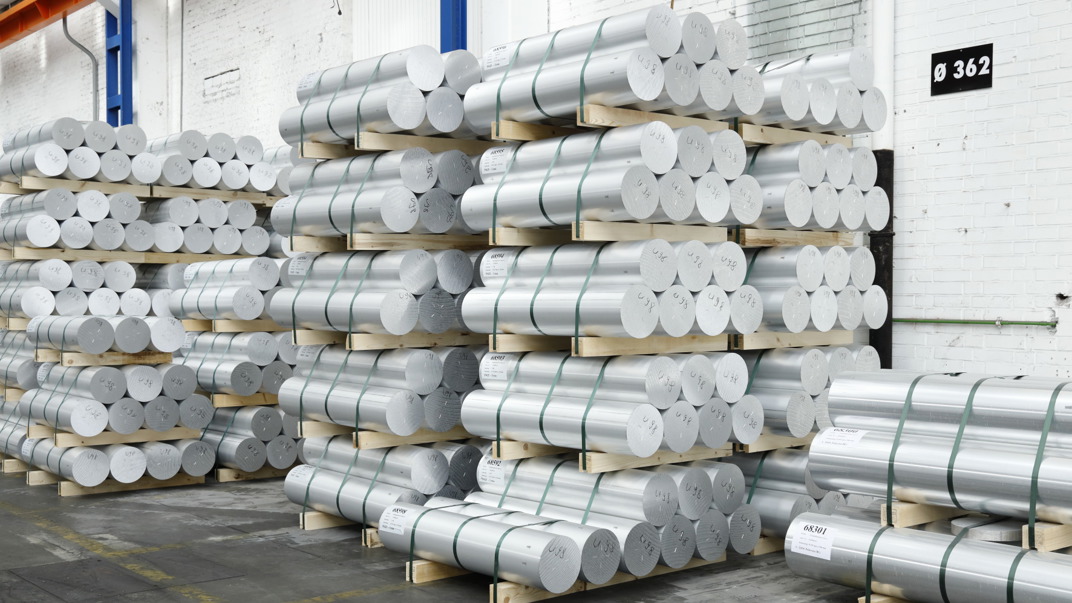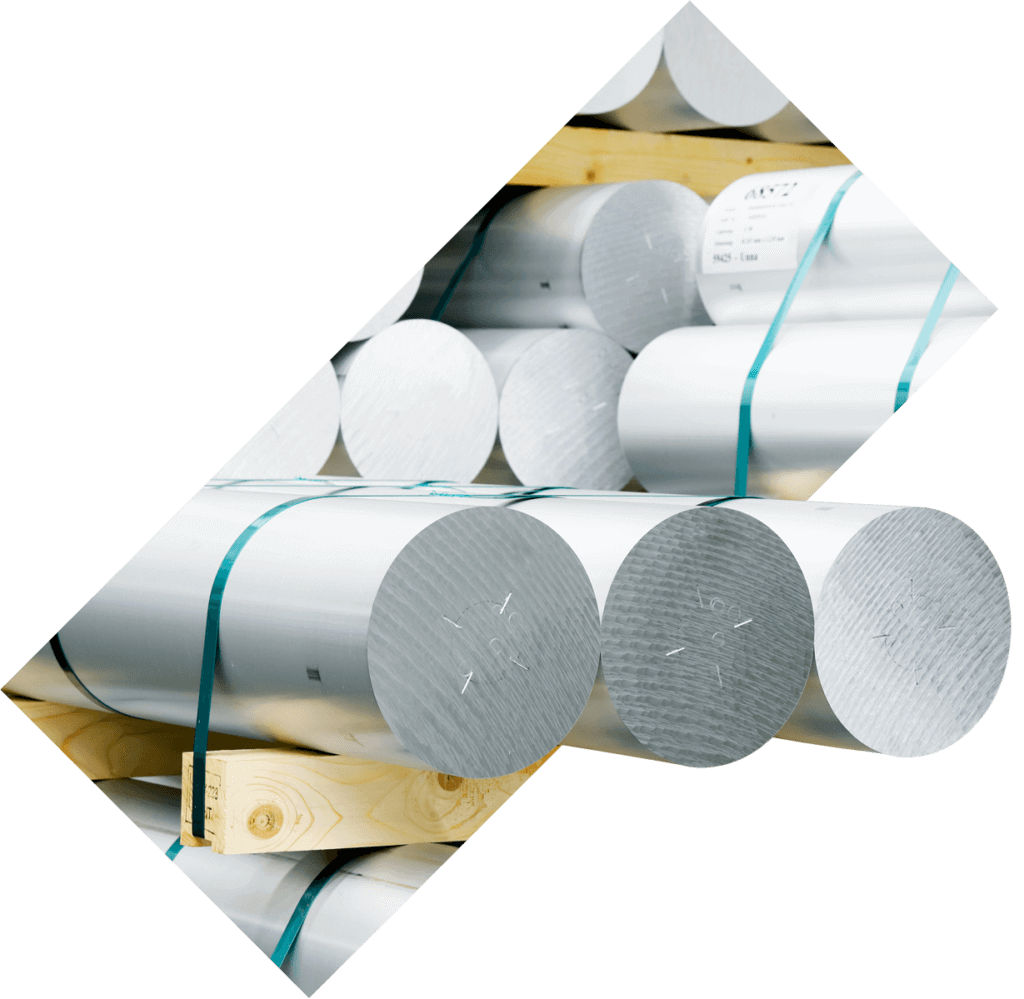Operations
Recycling aluminium requires 95 per cent less energy than making new metal
Aluminium manufacturing – primary aluminium vs. secondary aluminium. Primary aluminium is only used at EGA Leichtmetall very selectively and in small quantities.
We mainly use secondary aluminium and alloy it with various elements such as zinc, magnesium, copper, manganese or tin. Elements such as beryllium or vanadium are also used for special applications. The production of primary aluminium is very energy-intensive. Therefore, we have extensively specialised in the processing of secondary aluminium for over 30 years.
Aluminium can be recycled infinitely. Due to our high level of expertise and our many years of experience, we experience very little material loss when melting down secondary aluminium.
Bayer process: from bauxite to aluminium oxide
2. Subsequently, corrosive lye is added and the mixture is heated under pressure.
3. The insoluble components of the bauxite are separated from the caustic-alumina mixture.
4. The caustic-alumina mixture is now dried.
5. This leaves behind a powder, the aluminium hydroxide.
6. Reheating in special furnaces to 1,100 °C breaks down this compound to produce aluminium oxide.
Fused-salt electrolysis
The process for the initial production of aluminium is especially energy-intensive and consumes huge amounts of electricity. The recovered aluminium oxide dissolves in the molten bath at a temperature of 950 degrees in the furnace (electrolytic furnaces). In the process, the aluminium oxide is decomposed into aluminium and oxygen. Strong current causes the aluminium particles to dissolve from the powder, resulting in the deposition of pure aluminium, which can then be extracted. This process requires approx. 16 MWh per ton of aluminium.
Aluminium alloy production at EGA Leichtmetall
The process for producing primary aluminium requires a particularly large amount of energy. At Leichmetall, a very small proportion of primary aluminium is used very selectively and we mainly work with secondary aluminium. For instance, we use high-quality pre- and post-consumer scrap such as sheet metal or profiles. These are sustainably and elaborately processed to ensure that the resulting alloys meet the highest quality standards.
Focus on customer requirements: This is how we process our aluminium ingots

What is primary aluminium?
Primary aluminium is metal that is initially produced in pure form from aluminium ore. For this purpose, aluminium oxide is extracted from the aluminium ore bauxite using what is known as the Bayer process. The pure aluminium is subsequently produced from the aluminium oxide via the energy-intensive process of fused-salt electrolysis.
Aluminium density
Pure aluminium has a density of 2.7 g/cm³. High-strength aluminium alloys are only slightly above this (2.8 g/cm³). This corresponds to about one third of the density of steel at 7.8 g/cm³. Steel is being substituted by aluminium alloys in many sectors. The resulting weight reduction can lead to lower fuel consumption in the automotive sector, for example, or enables the installation of additional components.
Aluminium properties
Pure aluminium is a soft metal that can be adapted to its intended use by adding various alloying elements, such as copper or zinc. The resulting aluminium alloys are usually very easy to reshape, e.g. via bending, pressing or forging. The main properties that can be adjusted using alloying elements are:
- Strength
- Corrosion resistance
- Elasticity
- Heat resistance
- Flowability
Some aluminium alloys, such as EN AW-6082 or EN AW-7075, can still be subjected to heat treatment. This again significantly increases the strength of the highly weather-resistant alloy. Leichtmetall currently offers the EN AW-6082, finished heat treated (condition T6) with a diameter up to 700 mm. Other Alloys can be requested in T4 or T6.
Learn more about EN AW-6082 T6



